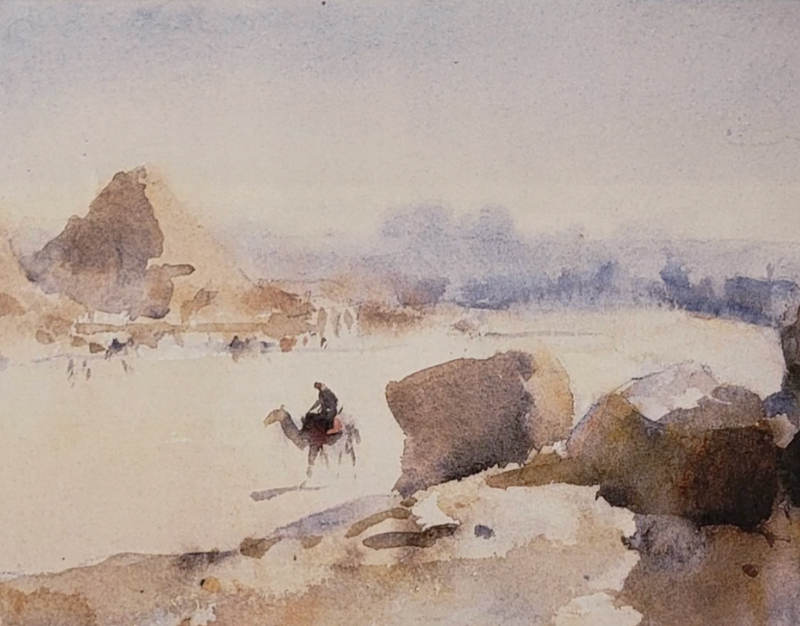Incorporating Animals
from Andy Evansen
Andy has many questions from students looking for the proper way to incorporate animals into their paintings. It is nice as a landscape painter to substitute in animals rather than figures. The temptation is usually to throw figures in, but Andy prefers to take some restraint in doing that so often.
The photo below is one of Trevor chamberlains watercolor paintings. Pay attention to how he handles the sheep. They are simplified forms. One lesson Andy talks about in his workshops is if you have a herd of cattle or a flock of sheep, you don’t need to paint every one of them with the same amount of detail. You need to spotlight 3 or 4 them and make them look convincing. Then, the rest can be suggestions, and the viewer’s brain fills out the rest. You can see how the sheep in the lower right corner is handled a little more accurately and is closer to the front. Your brain just assumes the other ones are also other sheep. If that same shape was stuck in a different landscape by itself, you would have a more difficult time deciphering what it was!
This also saves you a lot of time and keeps your painting nice and loose. The paintings end up being more impressionastic if you put a little less energy into detailing ALL of the animals. The importance should be on capturing the silhouette and the forms of these animals to make them convincing. If you take a look at the painting below, you can see the long, arcing neck of the camel. It really helps define the shape of that animal without much more detail added at all. In fact, the figure is just joined right in with the camel as well. But, we still know exactly what that animal is. Chamberlin has created that really convincing, camel shape without adding too much detail:
Andy knows adding animals can be a struggle, but he finds that we often do not pay enough attention or focus on two or three of the animals. Also, the fact that many of them are so far in the distance makes it so we don’t need to put that much energy into defining all of them. Again, pick a few that look more like animals and put them on the periphery to capture their shape. The rest of them can just be blocks, legs, and colors. The viewer will know what they are.
Andy Evansen is an amazing watercolor artist and mentor who wants to teach YOU today! Join him below for more:



